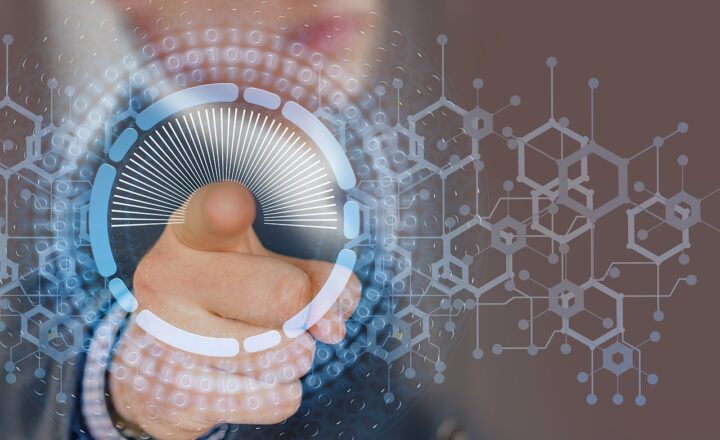
As the internet has become an integral part of modern life, it has also opened up new opportunities for cybercriminals. From data breaches to identity theft, the dark side of the internet can pose serious threats to individuals, businesses, and governments. In this article, we’ll explore the critical aspects of cybersecurity that everyone should be aware of to stay safe online.
1. Understanding Cyber Threats: The Basics
Cyber threats come in many forms, ranging from viruses and malware to more sophisticated attacks like ransomware and phishing. Understanding these threats is the first step to protecting yourself online.
Malware: Malicious software that can infect your devices and steal sensitive information. This includes viruses, worms, and Trojans.
Phishing: A social engineering attack that tricks users into providing personal information or login credentials by disguising itself as a legitimate source.
Ransomware: A type of malware that locks users out of their systems until a ransom is paid. It’s often spread through email attachments or malicious links.
Tips for Protection: Install antivirus software, keep your system updated, and avoid clicking on suspicious links or downloading unknown files.
2. Data Breaches: How Your Information Gets Exposed
Data breaches are becoming more frequent and can have devastating consequences. These breaches often involve the theft of sensitive data, such as credit card numbers, social security numbers, or medical records, from large organizations.
The Impact: When personal data is stolen, it can lead to identity theft, financial loss, and reputational damage for both individuals and businesses.
Tips for Protection: Use strong, unique passwords for each of your online accounts, enable two-factor authentication (2FA), and regularly monitor your credit reports for any signs of identity theft.
3. Social Engineering: The Human Element of Cybercrime
While many cybersecurity threats are technical in nature, social engineering attacks exploit human psychology to gain unauthorized access to information. These attacks often involve manipulation or deception to trick users into revealing sensitive information or performing certain actions.
Common Tactics: Phishing emails, fake websites, and phone scams are all methods used in social engineering attacks.
Tips for Protection: Always verify the identity of the person or organization requesting sensitive information. Be cautious when sharing personal details online or over the phone.
4. Public Wi-Fi: The Risks of Unsecured Networks
Public Wi-Fi networks, such as those found in coffee shops or airports, are convenient but come with significant security risks. These networks are often unsecured, making it easier for cybercriminals to intercept data transmitted between your device and the internet.
The Dangers: Cybercriminals can use man-in-the-middle attacks to eavesdrop on your internet traffic, capturing sensitive information like login credentials or credit card details.
Tips for Protection: Avoid accessing sensitive accounts or conducting financial transactions on public Wi-Fi. If you must use public Wi-Fi, always use a virtual private network (VPN) to encrypt your data.
5. Protecting Your Privacy Online
With so much of our personal information stored online, protecting your privacy has never been more important. Social media platforms, websites, and apps often collect vast amounts of data about you, which can be used for targeted advertising or, in some cases, sold to third parties.
Privacy Concerns: Location tracking, browsing history, and personal preferences are just some of the data points that companies collect.
Tips for Protection: Regularly review privacy settings on your social media accounts, use browser extensions to block trackers, and limit the amount of personal information you share online.
6. The Importance of Regular Software Updates
Keeping your devices and software up to date is one of the simplest and most effective ways to protect against cyberattacks. Software updates often include patches for security vulnerabilities that cybercriminals exploit.
The Risks: Outdated software can leave your devices exposed to known threats, including malware and ransomware attacks.
Tips for Protection: Enable automatic updates on your devices and regularly check for updates to your operating system, apps, and antivirus software.
7. The Role of Cybersecurity for Businesses
Businesses are often prime targets for cyberattacks due to the valuable data they hold. A successful attack can lead to financial loss, operational disruption, and reputational damage.
Common Business Threats: Data breaches, insider threats, and ransomware attacks are among the most significant risks businesses face.
Tips for Protection: Implement a robust cybersecurity strategy that includes regular employee training, data encryption, and the use of firewalls and intrusion detection systems.
Conclusion: Taking Control of Your Online Security
The internet offers a wealth of opportunities, but it also comes with risks. By staying informed about the latest cyber threats and taking proactive steps to protect your personal information, you can significantly reduce your vulnerability to online attacks. Whether you’re using the internet for work, entertainment, or shopping, cybersecurity should always be a top priority.







